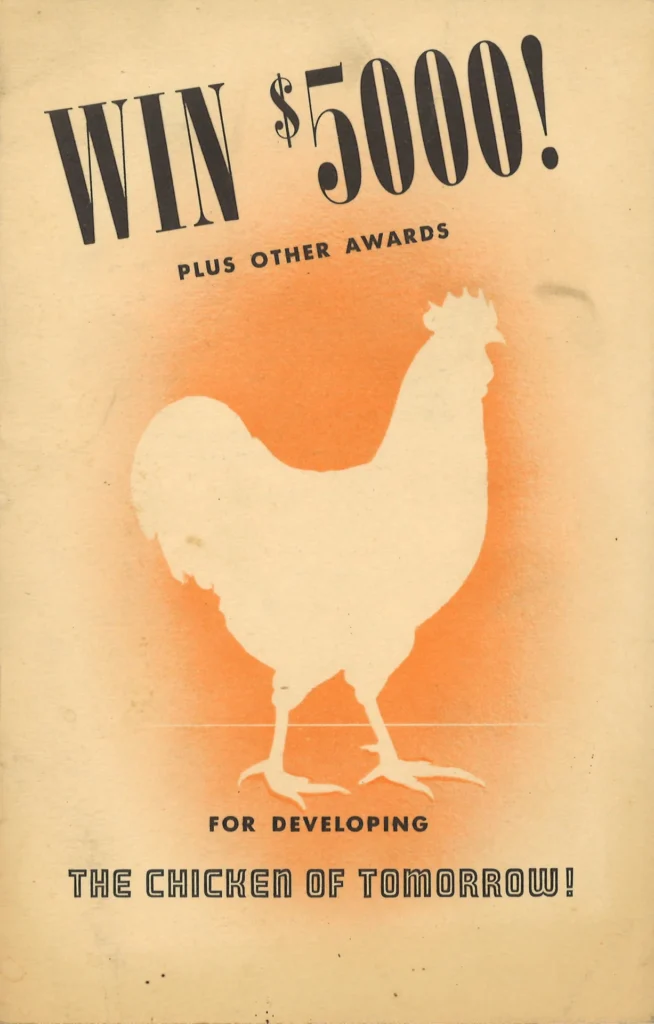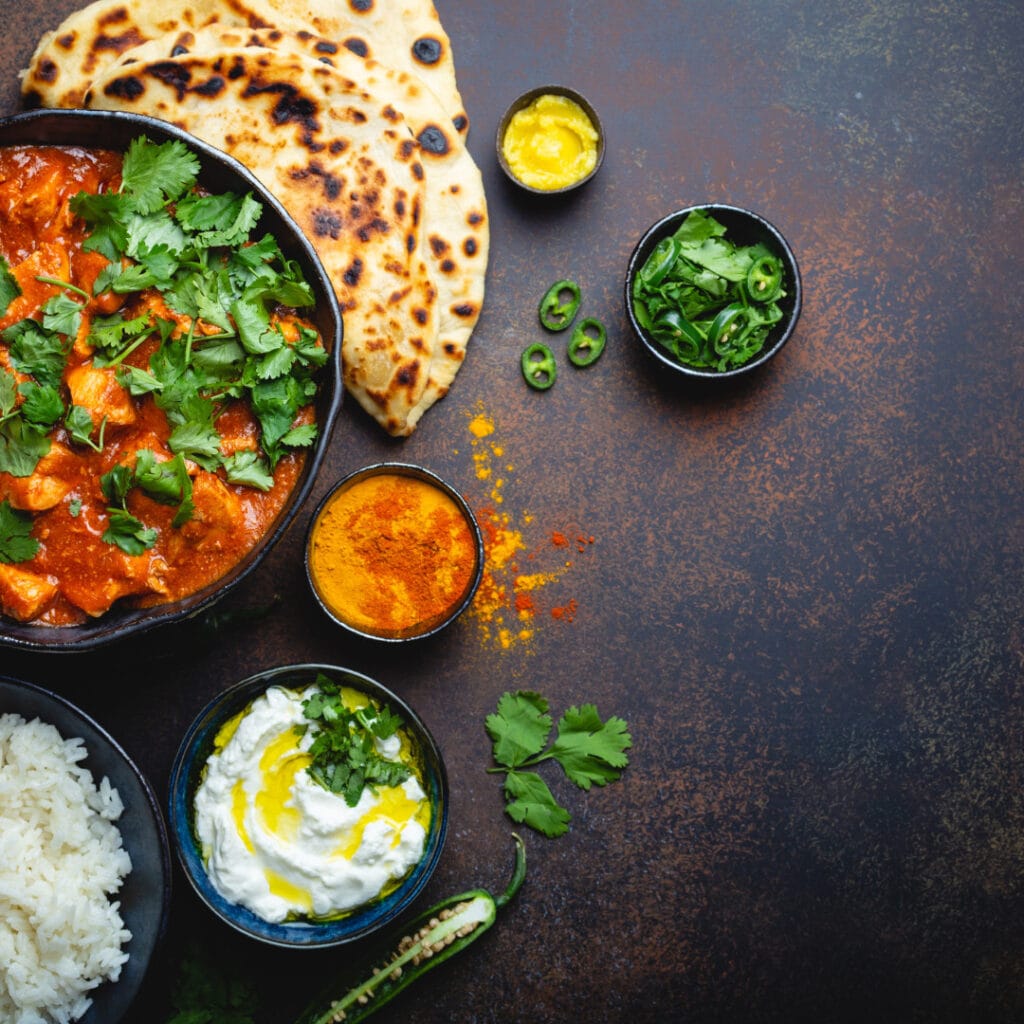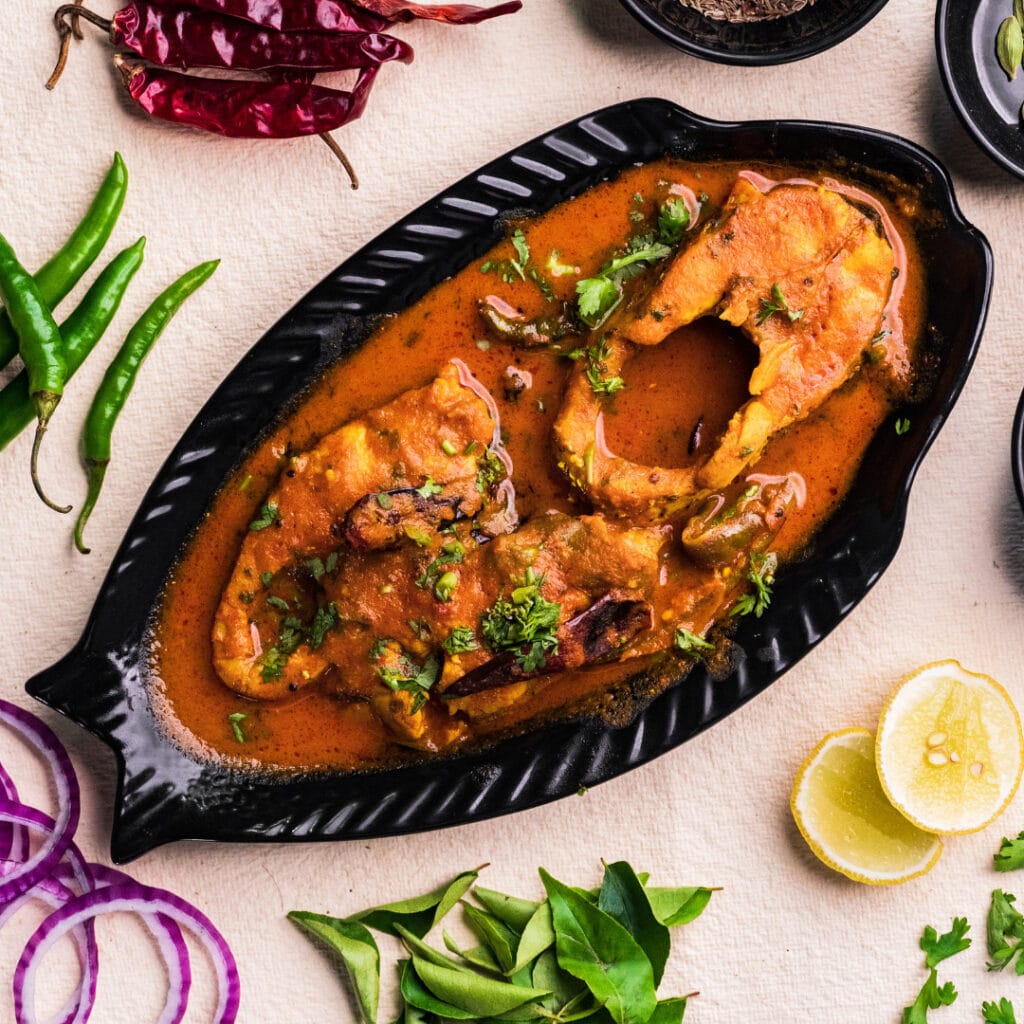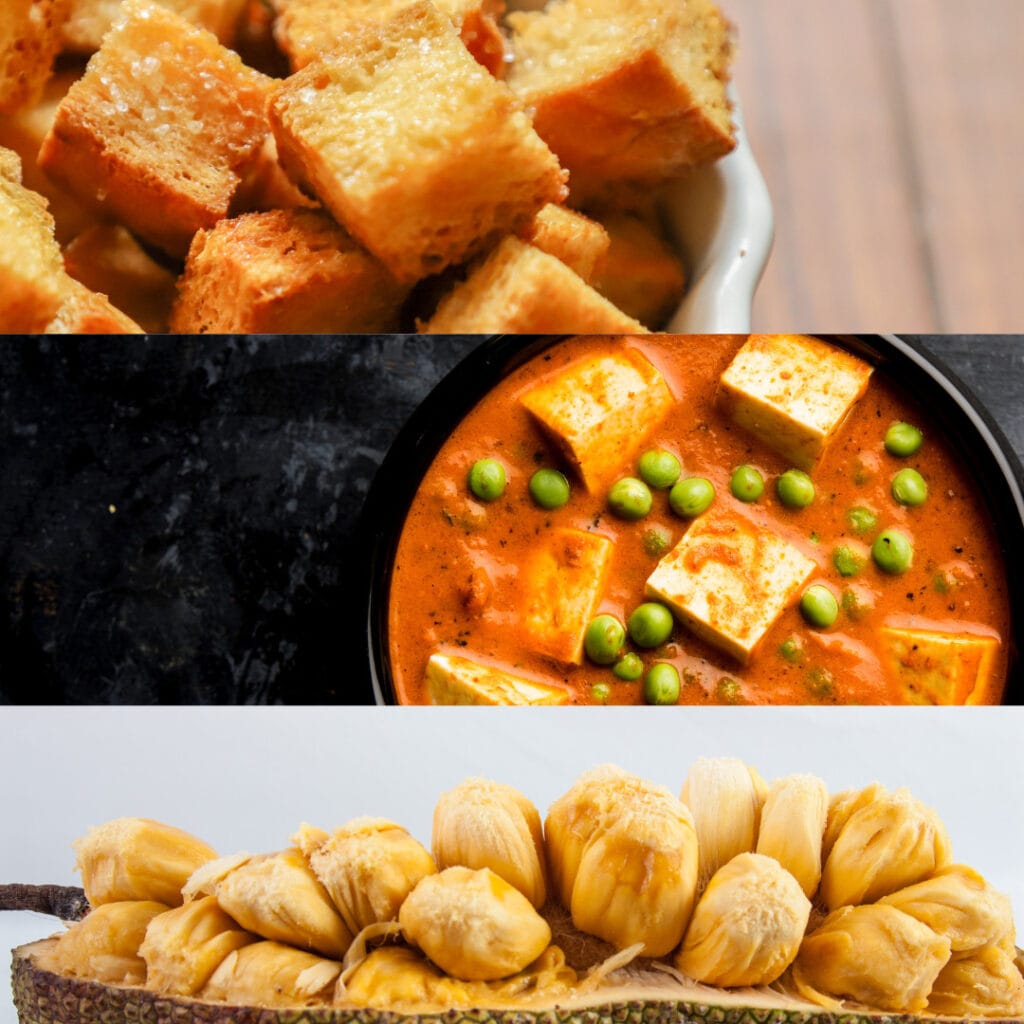A world without chicken.
It’s a paradise for hardcore vegetarians and vegans and a nightmare for those who eat chicken. And for companies like KFC, McD, Burger King, Biryani Blues, Paradise Biryani, etc., it means the end of the world.
Seeing how starkly different the perspectives are, one cannot but wonder: Is a world without chicken possible? What is the best alternative for chicken if it’s removed from the diet? Is the fight of a vegetarian/vegan a utopia that cannot be achieved? What would happen to the world if chicken is removed from the diet?
How did Chicken become so famous?
The story of chicken begins in 1923 when the first commercial breeding place in the United States was established. However, its popularity only surged after 1948 when a muscular, big-breast, meaty bird known as “broiler chicken” was developed. These sumptuous chickens represented a break from conventional farming, as they were meant to grow swiftly and significantly from their ancestors.

Thus began an era of the global dominance of Chicken.
What turned the easily farmed broiler chicken into the most appealing food for millions is a contest called “Chicken of Tomorrow” organised by the United States Department of Agriculture (USDA) with the support of significant poultry establishments around the world, in 1948, in the United States.
The contest was a strategic initiative to effect significant changes in poultry farming. It prompted changes in breeding techniques to improve qualities such as quick expansion, nutrient utilisation, and good meat production. The results of this initiative radically transformed the composition of chickens genetically, opening the path for the modern poultry industry that prevails in the present-day market.
Another noteworthy thing about this contest, besides ensuring that the growing demand is satisfied, is the reduction of expenses and the transformation of chicken into a primary source of protein for millions of people worldwide.
From then on, as the world continued to grow, new fast food chains (McD, KFC, etc.) started to establish themselves in significant places in the world, and Chicken found its market and role in the supply chain.
However, there are other reasons why chicken has become so appealing to consumers.
Why is chicken so appealing?
Broiler Chicken appealed to the chicken farmers. They are easy and quick to produce. However, the selling factors for consumers are affordability, adaptability, cultural significance, and nutritional and economic value.
Adaptability & Affordability: It is incredibly adaptable as it quickly soaks in different types of sauces, seasonings and marinades, which enables it to be added to various recipes in diverse culinary traditions featuring several dishes. It is also comparatively more cost-effective than other meats available in the market, such as beef, causing it to be an accessible source of protein to a broader range of people.

Cultural significance: Chicken is a popular choice among varied communities, as it is universally acknowledged in many societies and religions, such as Dusshera and Durga Pooja in East India, Thanksgiving in the US, Chinese New Year in China, Hanukkah, Jewish festival predominantly celebrated in France.
Nutritional & Economic: For a healthy and balanced diet, Chicken is considered crucial as it contains high-quality nutritional values, such as vitamins B and D and proteins, which help in muscle building and restoration, while being a healthy option as it contains low-calorie and fat in comparison to other meats.
The world saw the value & appeal of chicken. And as its popularity grew, the chicken industry grew.
Just how big is the chicken industry?
The chicken farming industry is an enormous business with significant economic influence. As per the Food & Agriculture Organization of the United Nations (FAO), chicken production reached approximately 125 million tonnes in the year 2022 and has been growing unwaveringly. Currently, the U.S.A. is the leading producer catering to the high demand for reasonably priced and high-grade protein. The U.S.A. produces about 43.4% of the total chicken consumed, followed by Asia (33.5%) & Europe (16.6%).
On the consumption side, Americans consume 15,000 metric tons of chicken annually (chicken wings are the most popular dish). Asians consume 12,000 metric tons of chicken & Europeans consume 11000 metric tons. Brazil also stands out as a consumer, consuming about 10,000 metric tons, supported by its strong poultry industry. Mexico and Russia show consumption levels at around 4,600 metric and 4,500 metric tons, respectively. Indonesia follows with about 3,700 metric tons consumed annually. India trails it at around 3,600 metric tons. Japan, the United Kingdom, Iran, and Argentina also demonstrate figures ranging from 2,100 to 2,800 metric tons yearly.
From the point of view of two of the biggest fast-food companies:

KFC (Kentucky Fried Chicken), a known brand for its fried chicken, recently opened 2700 outlets in 97 different countries in 2023. With it, it has reached a network of more than 30,000 restaurants across 145 countries and territories. It registered a revenue of $33.9 billion. While the exact quantity of chicken purchased annually is not officially specified, the sheer size of its restaurant chain and dominance in the market highlights KFC’s reliance on local chicken farmers and the poultry industry.

McDonalds has over 40,000 restaurants. Its revenue from producing food based on Chicken surpassed $25 billion. Although the company did not disclose specific numbers concerning the purchase of chicken globally, industry experts estimate that it buys somewhere between 1.5 to 2 billion pounds each year – a volume which makes it the second biggest purchaser of chicken after KFC.
The data highlights how integral chicken is, emphasising its versatility and broad appeal. It also highlights the extensive global market presence of the chicken industry and underlines that it employs millions in every sector, from farming to retailing meat. And when contemplating a world without chicken, it is impossible to ignore it.
This leads to the question: Should chicken, something that is extremely popular, be replaced? Is there any problem with it?
What is the problem with Chicken?
In 2019, the FAO stated that 23 billion chickens were raised worldwide, 80% bred for meat production. With the ever-increasing chicken consumption and reliance on chicken, large-scale chicken farming, also called factory chicken farming, has significant environmental concerns. Here are some of the major issues:
Resource Usage: Factory chicken farming requires a lot of land, water and energy mainly because chickens need a lot of grain-based feed. Growing these grains depletes the soil and pollutes water from fertiliser runoff, which harms the environment.
Waste Management: Waste from chicken farms, like manure and feathers, pollutes water sources & makes the air quality worse. The high nitrogen in chicken manure causes problems in bodies of water by leading to eutrophication – a process in which excessive nutrients accumulate in a body of water, resulting in increased growth of microorganisms that deplete the oxygen in water.

Diseases: The extensive farming of chickens impacts biodiversity as it damages habitats and contributes to the spread of diseases among wild bird populations, such as avian influenza (bird flu).
Emission of Greenhouse Gas: Even though chickens produce less greenhouse gas emissions of Nitrous Oxide and Methane than cattle, the overall carbon footprint remains significant due to energy farming methods and the reliance on grain feed.
Deforestation: With the demand for chicken rising, these environmental consequences are expected to worsen, leading to increased deforestation for feed crops & industry complexes. Which inevitably leads to heightened pollution levels and pressure on water resources.
Addressing these challenges necessitates embracing farming techniques and reducing meat consumption by preferring an alternative protein, which can relieve the environment from the pressure driven by large-scale chicken farming, motivated by large-scale consumption.
This brings us to the crucial question: If chicken farming is damaging, how about we stop the entire process?
Is it possible to remove chicken from the world’s diet?
The answer is NO. It is not possible to remove chicken from the world’s diet. And this is not just because there exists a lot of demand for it (clearly). It is because no alternative can improve a person’s lifestyle without harming the environment more if chicken is removed from the equation.
Let us explain.
In 2021, 162.5 Million tons of fish is consumed. On a per-person basis, annual consumption has climbed from 9.1 kg in 1961 to 20.7 kg in 2022.

80% of the world’s fish output is used for consumption. These figures will only increase when chicken is removed from the equation, as Fish is often considered the best, equally affordable food item. If that were to happen, the problems that are already bothering the fishing industry, like – Overfishing (fishing faster than they can reproduce), water pollution, rising sea temperatures, habitat destruction activities (where coral reefs and seagrass beds crucial for marine biodiversity are destroyed, bycatch (capture of untargeted species like turtles, marine mammals etc.) – will pose much more significant problem than they already do.
Even if one considers Lamb an alternative to Chicken & not fish, it is no better. This is due to three reasons.

First, for every Kilogram of lamb consumed, 39.3 Kg (86.4 lbs) of Carbon dioxide equivalents is generated. Currently, the people in Greece consume 12.3 Kg of lamb per person, the people of Kazakhstan consume 8.75 KG, Australians consume 5.81 KGs, Americans consume 5Kg per person yearly, the people in Turkey consume 4.16 Kgs per year & Saudi Arabians consume 4.12 Kg / per person. If chicken were removed from the diet, the consumption of Lamb & the resulting carbon dioxide emission would not be friendly.
Secondly, unlike chicken, lamb / red meat has been linked to a variety of illnesses and significant health issues by several Cancer institutions across the globe. Lastly, the extensive use of antibiotics while feeding sheep for accelerated growth and increased profits is also a factor that cannot be ignored.
Similar environmental concerns exist for other meats that are present. Not to mention the impact on costs of the other products if chicken is removed.
In short, no suitable alternative to chicken exists that will NOT harm the environment more if it is removed, at least not when it comes to other meats.
What about Paneer, Tofu & Jackfruit?
Paneer also known as “cottage cheese” holds a special place in Asian Cuisine because of its soft taste and nutritional values, such as calcium and protein. It also boosts metabolism, maintains blood pressure, supports cartilage formation and strengthens immunity, and is often the closest vegetarian alternative to replace chicken meat.
The IMARC Group conducted a survey based on that; it was discovered that in 2023, the paneer market was assessed at around 570 billion and is projected to expand at a compound annual growth rate of 13.25 per cent from 2024 to 2032. The primary areas in the Indian market are Madhya Pradesh, Bihar, Maharashtra, Uttar Pradesh, Haryana, Delhi, Telangana, Tamil Nadu, Gujarat, Andhra Pradesh, Karnataka, West Bengal, Kerala and Rajasthan account for the largest market for paneer consumption.
Tofu is known as a gluten-free food option. The global market size for tofu was valued at around $2.31 billion in 2018 and is projected to grow at a rate of 5.2% from 2019 to 2025. A serving of 3.5 ounces contains 8% protein, 2% carbohydrates, and other essential nutrients. The U.S. Food and Drug Administration (FDA) suggests that consuming 25 grams of soy protein daily can help maintain protein intake and support cholesterol levels.

Jackfruit, an adaptable and nutrient-rich option, which can mimic the flavours and textures of chicken if cooked and seasoned adequately. India leads in its production, followed by Bangladesh, Thailand, Indonesia and Nepal. The global market value of jackfruit was around USD 315.91 million in 2022 and is projected to reach USD 395.7 million by 2032 with an annual growth rate of about 4%. In nations like North America and Europe, jackfruit is becoming popular as a vegan substitute for meat due to its texture resembling meat. It is packed with vitamins like C and A that boost the immune system, maintain skin health, aid digestion, and promote gut health.
All three items – Paneer, Tofu, & Jackfruit can be construed as effective alternatives for chicken, and their appeal is increasing slowly. But they face some significant challenges:
If chicken were removed from the diet, would the consumers & businesses accept it as the best option to replace it? Even if they do accept it, would they be able to replace the entire demand for chicken while making sure that the demand for other meat doesn’t increase? With so few Nations currently producing/consuming these alternatives, would it not be likely that the market, in case chicken is removed from the diet, would shift to other meat?
Verdict: World without chicken – possible?
The massive consumption of chicken—amounting to 15000 Metric tons annually in the U.S. With substantial numbers in Asia and Europe—underscores both its importance in fulfilling the protein requirements of an expanding global populace and the number of jobs it sustains, which results in contributing significantly to the economies of various nations. Moreover, Chicken has become a staple in diets worldwide because of its versatility, affordability and nutritional benefits. It is a protein source for people and is significant in diverse culinary practices worldwide.
The answer to the question – Is it possible to live in a world without chicken – is simple but not straightforward.

No. A world without chicken is not possible. Chicken farming is a problem, and it does cause environmental harm, but we cannot remove chicken from the diet. Like it or not, society depends on chickens, and removing them causes more harm than good to the environment.
Concerns about the impacts of large-scale chicken farming, like waste management issues and resource depletion, are urgent, but current alternatives like paneer, tofu and jackfruit face challenges in meeting both demand and cultural significance compared to chicken. While these substitutes offer nutrition and appeal, they are not yet positioned to replace chicken in diets without potentially driving up demand for other meats, further worsening environmental problems.
Concerns about the impact of large-scale chicken production on the environment and our well-being are essential. However, we cannot ignore chicken’s rooted significance and nutritional value in various cuisines.
Ultimately, the path forward lies not in eliminating the chicken but in creating a sustainable food system. This requires cooperation among consumers, farmers and policymakers to shape a future where dietary choices promote health and environmental awareness while preserving the culinary heritage that chicken contributes to our lives.
